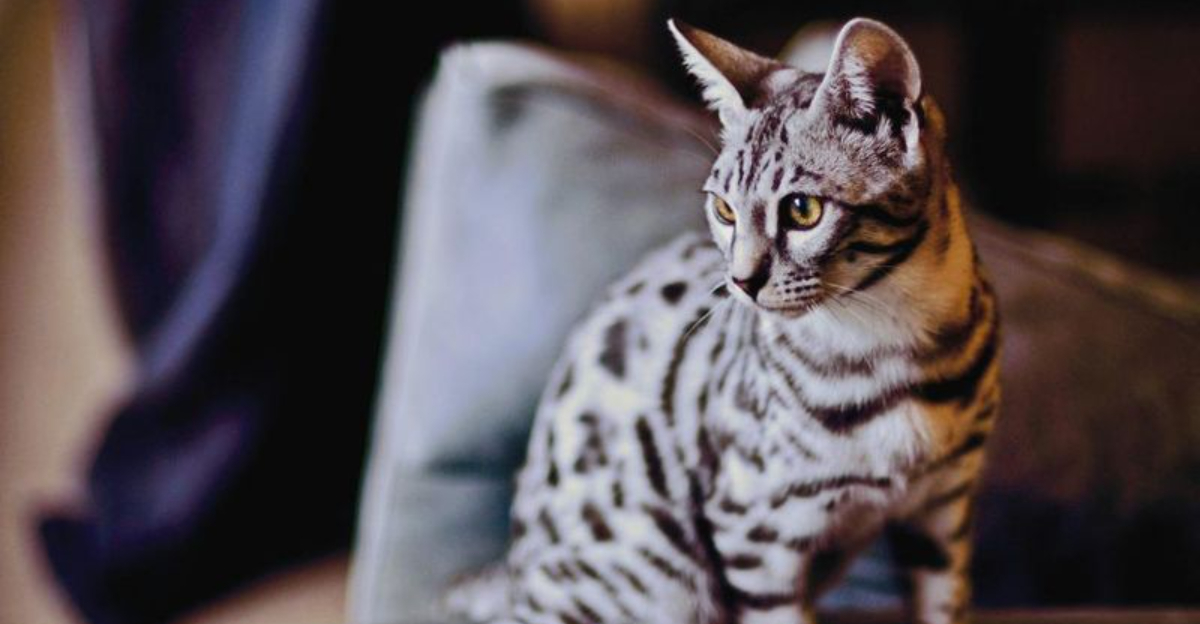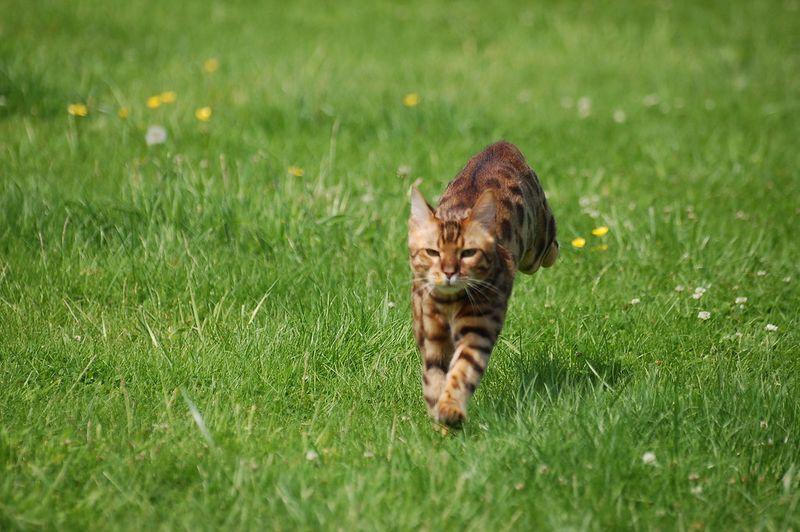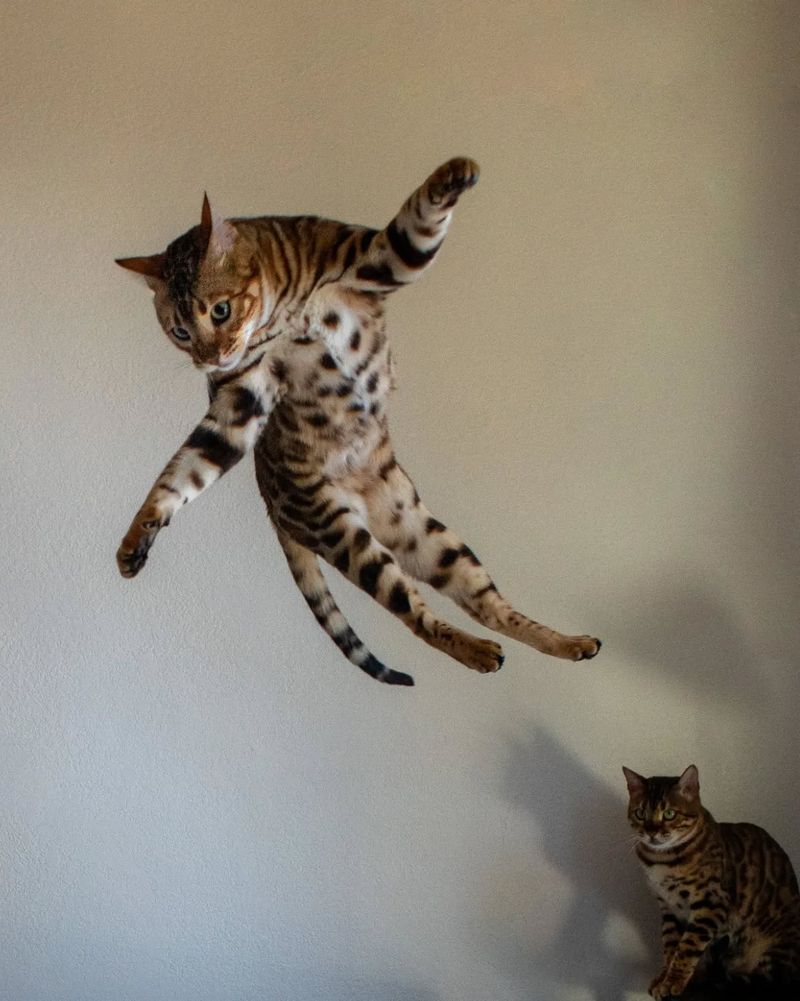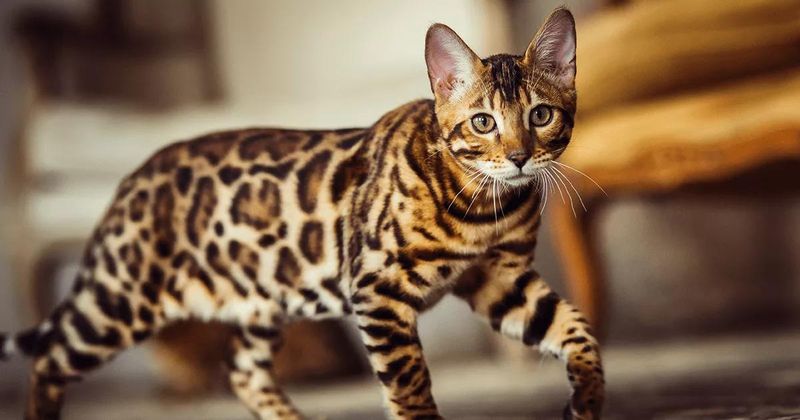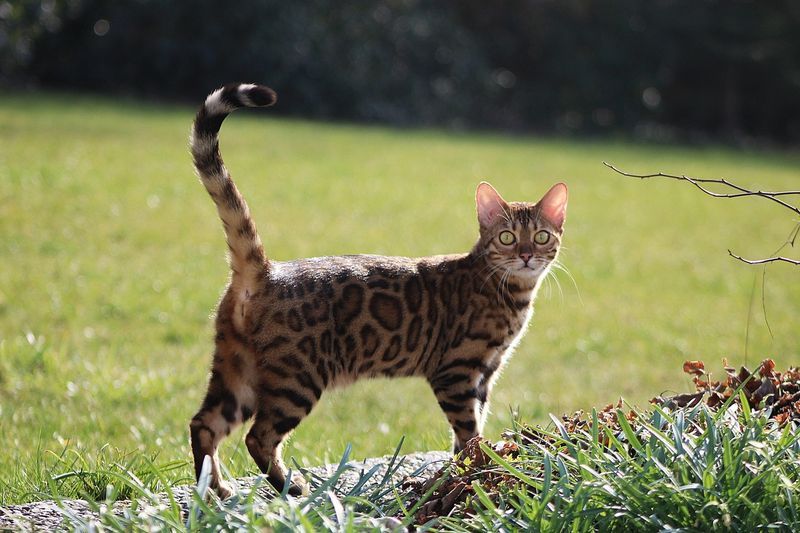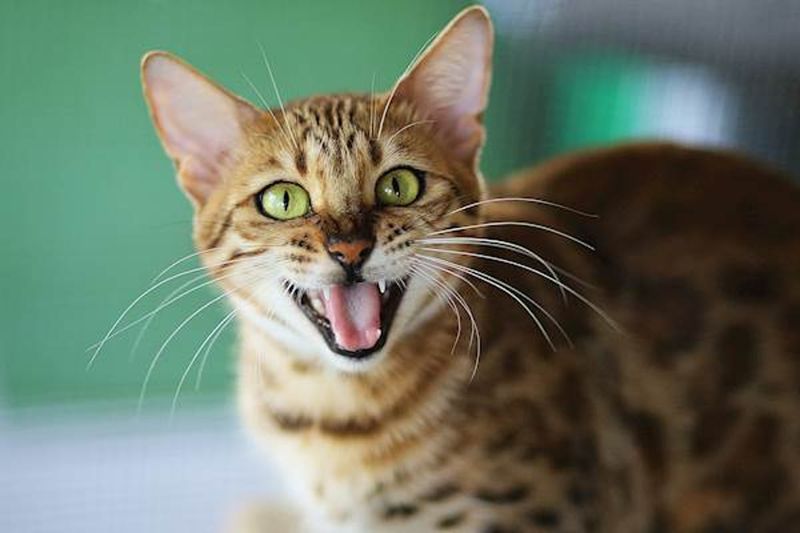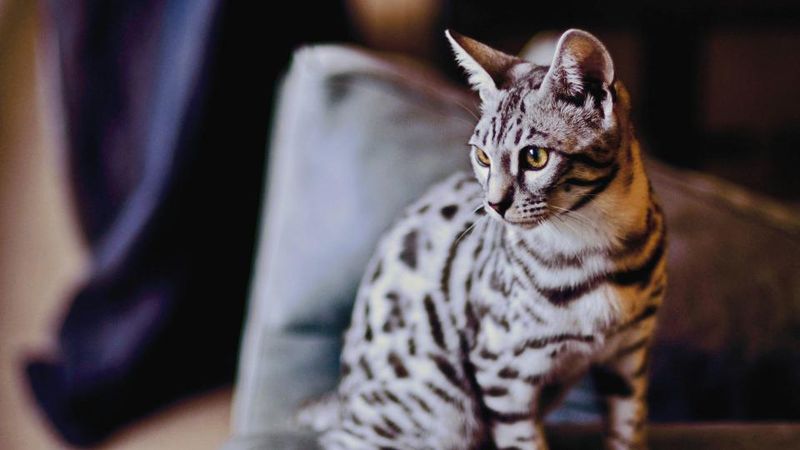📖 Table of Content:
Bengal cats are the wild child of the domestic feline world — striking in appearance, and even more remarkable in personality. With their leopard-like coats and athletic builds, these cats are often described as miniature jungle predators living in your home. But along with their beauty comes a boundless reservoir of energy that can surprise even the most seasoned cat owners.
Unlike typical housecats who are content to nap away the day, Bengals crave constant stimulation. They’re intelligent, athletic, and highly curious — a combination that results in behaviors that may seem excessive or even destructive without proper outlets. Owners often find themselves chasing their Bengals more than their Bengals chase toys, which can turn peaceful living into a whirlwind of excitement (and exhaustion).
Understanding the signs of your Bengal’s high energy and knowing how to respond is key to a happy household. When their need for activity is met, Bengals shine as loyal, affectionate, and endlessly entertaining companions. But when ignored, their energy can manifest in frustrating or chaotic ways. Let’s dive into the seven ways your Bengal cat shows it has endless energy — and, more importantly, what you can do to manage and channel that vitality.
1. Constant Zoomies
Few things illustrate a Bengal’s high-octane personality like the classic case of the zoomies — those sudden bursts of speed where your cat ricochets off furniture like a pinball. These episodes often strike at dawn or dusk, times when cats are naturally most active. For Bengals, these wild runs are a form of release, an expression of energy that must go somewhere. Without sufficient stimulation, the zoomies can escalate into constant pacing or even furniture damage. To help manage this, incorporate scheduled play sessions using fast-moving toys like feather wands or laser pointers that mimic prey. Engaging your Bengal in short, intense bursts of play can give them a healthy outlet and reduce nighttime antics. A tired Bengal, after all, is a well-behaved Bengal.
2. Pouncing on Everything
Leaping onto countertops, bookshelves, or even your shoulder is par for the course when you share your space with a Bengal. This breed thrives on climbing and exploring elevated spaces, driven by instincts inherited from their wild ancestors. It’s not mischief — it’s motion with purpose, rooted in their love for height and vantage points. If your Bengal constantly jumps where they shouldn’t, it’s a sign they need safe alternatives. Investing in tall cat trees, multi-level condos, or wall-mounted climbing systems can redirect their climbing urges. Creating vertical territory allows them to express their natural behaviors in an appropriate way. Your Bengal doesn’t want to be destructive — they just want a jungle gym.
3. Relentless Vocalization
Endless meowing, trilling, or yowling may sound like your Bengal is trying to tell you something — and they are. These cats are notoriously vocal and often use sound to communicate boredom, excitement, or a desire for interaction. Rather than dismissing it as noise, listen to the context and timing of their chatter. You’ll often find it ramps up during periods of inactivity or when they want attention. One way to address this is to enrich their environment with mentally stimulating activities like puzzle feeders or foraging toys. When a Bengal’s brain is engaged, their need for vocal expression often lessens. Think of it as giving them something to “talk” to that doesn’t involve keeping you up at night.
4. Chasing Shadows or Reflections
Obsessive chasing of lights, reflections, or shadows across walls can seem quirky — until it becomes constant. Bengals are visual hunters, and even the faintest movement can trigger their chase instinct. While it might seem harmless, this behavior can turn into compulsive activity if they’re not mentally or physically fulfilled. To avoid this, provide alternative visual stimulation through interactive laser toys or battery-powered prey-like gadgets. These tools allow your Bengal to direct their focus toward moving targets they can “catch.” Encouraging this type of play satisfies both their eyes and their energy. Ultimately, it’s about offering movement that leads to reward — not endless, fruitless frustration.
5. Stalking and Ambushing You or Other Pets
Creeping around corners and springing onto you or other pets is not aggression — it’s play-hunting in its purest form. Bengals have a strong predatory drive and will often act out their instinct to stalk and pounce, especially if they don’t have prey-like toys available. This behavior, while natural, can be alarming or irritating when directed at your ankles or a nervous older pet. The key is to redirect their focus using toys that simulate hunting, like feather teasers or robotic mice that they can catch and “kill.” Regular sessions that end with a successful “catch” help them feel satisfied and calm. Without that outlet, you may end up being the stand-in prey.
6. Overactive at Night
Nothing disrupts sleep like a Bengal launching onto your bed at 2 a.m., meowing or pouncing with glee. This nocturnal hyperactivity is common, especially in Bengals who haven’t expended their energy during the day. Rather than resigning yourself to sleepless nights, establish a routine that includes active evening play followed by a meal. This mimics the hunt-eat-sleep cycle of a wild cat, encouraging your Bengal to wind down. A protein-rich dinner after a good workout can do wonders in resetting their internal clock. When their natural rhythms are honored, they’re far more likely to sleep when you do. You’ll thank yourself in the morning.
7. Curiosity That Borders on Chaos
Always the first to investigate open drawers, running faucets, or the clink of a spoon, Bengals are relentless in their curiosity. It’s not defiance — it’s a constant thirst for novelty and interaction with their environment. This can lead to torn paper, knocked-over glasses, and the occasional surprise in the laundry basket. To keep their minds occupied, introduce novelty through rotating toys, treat puzzles, or boxes with hidden rewards. Creating Bengal-safe exploration zones where they can satisfy this urge without causing chaos is a smart move. After all, a curious Bengal is a brilliant one — they just need better puzzles than your sock drawer.
